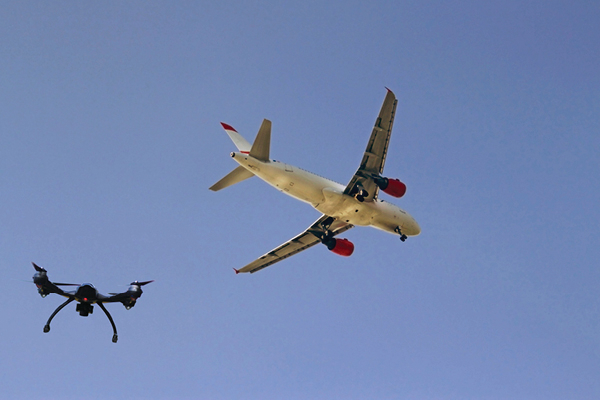Airspace Q1 2019 – A best value approach
In the first of a series of articles on best practice in procurement, Kelly Ann Hicks, Chair of the CANSO Acquisition Excellence Workgroup, examines how to properly evaluate costs and benefits.

Last year at World ATM Congress, CANSO launched its Acquisition Excellence Manual. The manual outlines often complex processes and procedures and provides insight and guidance on acquisition best practice to help Members meet current and future challenges when buying and selling in air traffic management (ATM).
ATM is a dynamic industry and air navigation service providers (ANSPs) must keep evolving and improving. Demands from airlines for increased capacity, improved resiliency and reliability, increased speed and flexibility, coupled with high levels of safety assurance at lower costs, all demand that ANSPs’ sourcing strategies be adaptable and strategic. Now more than ever, ANSPs must work together with the aviation industry to deliver better value for their customers.
The faster pace of technological change, the introduction of new concepts and radical new service models are forcing ANSPs to adapt and consider new procurement and relationship approaches.
To meet these challenges and maximise the value from procurement, purchasing and supply chain functions need to embrace a tailored, focused and flexible approach to acquisition and service needs.
Best value proposition
Traditional lowest cost procurement processes may not provide the best products and services for all acquisitions in an organisation.
A competitive low-cost bid process can work well for commodity purchases where there are many competitors in the market and there is little differentiation between the offered goods or services. However, if the market is limited, specialised and fast-changing, these processes can be inadequate or inappropriate. The approach of minimal acceptability, the basis of a lowest cost procurement, can result in higher costs in the long-term as well as quality issues or faster life cycle expiry.
To drive best value in procurement, organisations need to define what best value means for them and for each transaction, as part of a strategic procurement plan.
A traditional way of looking at this is to determine the most advantageous combination of cost, quality, risk, and social factors, among others, to properly assess the value achieved for the money.
Best value propositions will also identify key drivers for a procurement. Is it an operational safety need for example, or is it an efficiency, or even a time-critical issue? Establishing these factors at the outset will assist in a more accurate account of what best value means.
The value of procured goods or services may be simply described as a cost benefit analysis in which the cost to procure and the benefits obtained are compared. Other terms to characterise best value comparisons include strengths and weaknesses, risks and opportunities.
In the assessment of costs and benefits, it is important to identify the costs of alternative products for meeting the same need, function or programme purpose, as well as the costs of doing nothing at all. This strategic accounting of opportunity cost considers how resources can be allocated for maximum benefit relative to all the organisation’s needs, functions and programmes.
Best value is a broad concept though and, in addition to the considerations referenced above, organisations should consider as many approaches and methods as possible.
Alternative approaches
Performance-based contracting is a set of concepts and practices that focuses on developing strategic performance metrics and directly relating contracting payment to these performance metrics. Common metrics include availability, reliability, maintainability, supportability and the total cost of ownership. Incentivised, long-term contracts with specific and measurable levels of operational performance can support acquisition goals.
Total cost of ownership is a measure of all the cost components associated with the procurement of a product or service. This includes understanding all the supply chain-related costs of doing business with a particular supplier for a particular good or service. What are the total direct and indirect costs of the procured system?
Technical assessment incorporates advice from the engineering department or an external specialist to ensure that the technical solution is compliant with industry standards. Comparisons with other suppliers can be made using this information.
The procurement process map is about visually mapping out the possible process steps and methodology for an acquisition. This often sparks valuable discussions examining the many alternative steps, such as which are logical, which are practical, and which have the most potential benefit. What are the main steps towards a successful acquisition?
It is also vital to recognise the value in each procurement phase. Most procurement stages are considered essential links in a chain, but consideration should be given to which procurement stage delivers the best value.
Information is crucial to extracting value as are good contract negotiation and writing skills. Good contract administration is important to make sure the expected benefits are received and to prevent avoidable changes to the contract or avoidable increases in price. What is the purpose of each phase of the acquisition process?
Finally, there should be continuous improvement. An astute organisation will keep talking and working with providers and other partners throughout the procurement cycle about value-added activities and services. How can the partners save time or money or improve service?
Serving sourcing needs
The above list is not meant to be an exclusive list of procurement practices or considerations, but it illustrates the breadth and diversity of factors and approaches that could be applied to a best value procurement.
In today’s environment, ANSPs are making significant technology and infrastructure investments to modernise their systems and ensure they can safely accommodate rising traffic levels.
While there is pressure to remain cost efficient, awarding contracts to low cost bids without examining the total value of the transaction will not serve all sourcing needs.
Procurement specialists must evaluate categories of purchasing and determine where best value fits best.
The next article in this series will examine how requirements can determine the success or failure of your acquisition.
What is value?
Value is a combination of what is important and the extent of that importance.
As for the what, typical procurement considerations affecting value include:
- Consistency, reliability, and responsiveness from suppliers (supplier culture)
- All costs identified through a life-cycle cost analysis (including resources necessary to conduct the procurement, purchase price, fiscal tracking, and processing costs, storage, maintenance and other operational costs, training and disposal)
- Meeting required standards and/or specifications both at acquisition and through their expected use life
- Driving continuous improvement
- Knowledge sharing
- Economies of scale
- Optimum risk transfer
- More effective working practices
- Environmental aspects
- Security
- Alignment with corporate vision and strategy
The weight accorded to each of these considerations will depend on an organisation’s value statements, strategic priorities, and overall long-term objectives either on a single acquisition basis and/or on the basis of an overall sourcing strategy.



